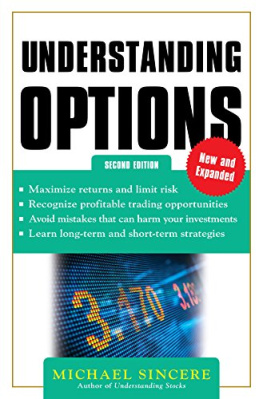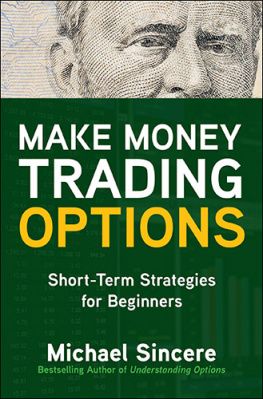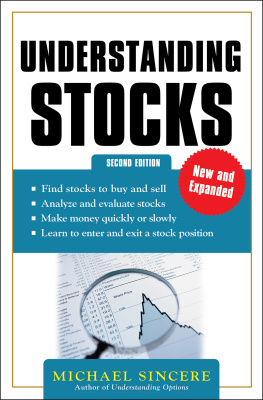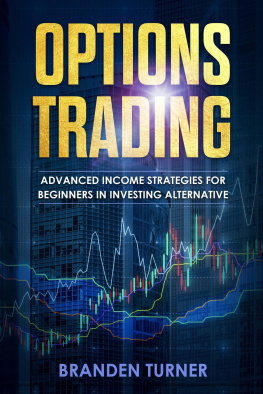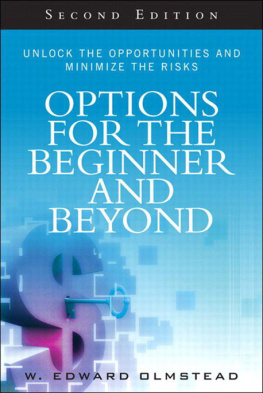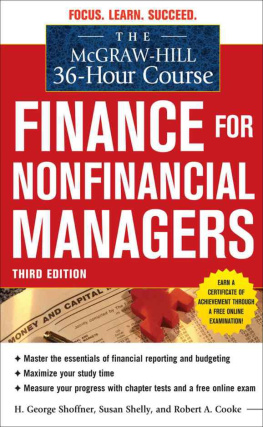


Copyright 2014 by McGraw-Hill Education. All rights reserved. Except as permitted under the United States Copyright Act of 1976, no part of this publication may be reproduced or distributed in any form or by any means, or stored in a database or retrieval system, without the prior written permission of the publisher.
ISBN 978-0-07-181784-4
MHID 0-07-181784-0
The material in this eBook also appears in the print version of this title: e-ISBN 978-0-07-181787-5, e-MHID 0-07-181787-5
All trademarks are trademarks of their respective owners. Rather than put a trademark symbol after every occurrence of a trademarked name, we use names in an editorial fashion only, and to the benefit of the trademark owner, with no intention of infringement of the trademark. Where such designations appear in this book, they have been printed with initial caps.
McGraw-Hill Education books are available at special quantity discounts to use as premiums and sales promotions, or for use in corporate training programs. To contact a special sales representative, please visit the Contact Us page at www.mhprofessional.com .
TERMS OF USE
This is a copyrighted work and The McGraw-Hill Companies, Inc. (McGraw-Hill) and its licensors reserve all rights in and to the work. Use of this work is subject to these terms. Except as permitted under the Copyright Act of 1976 and the right to store and retrieve one copy of the work, you may not decompile, disassemble, reverse engineer, reproduce, modify, create derivative works based upon, transmit, distribute, disseminate, sell, publish or sublicense the work or any part of it without McGraw-Hills prior consent. You may use the work for your own noncommercial and personal use; any other use of the work is strictly prohibited. Your right to use the work may be terminated if you fail to comply with these terms.
THE WORK IS PROVIDED AS IS. McGRAW-HILL AND ITS LICENSORS MAKE NO GUARANTEES OR WARRANTIES AS TO THE ACCURACY, ADEQUACY OR COMPLETENESS OF OR RESULTS TO BE OBTAINED FROM USING THE WORK, INCLUDING ANY INFORMATION THAT CAN BE ACCESSED THROUGH THE WORK VIA HYPERLINK OR OTHERWISE, AND EXPRESSLY DISCLAIM ANY WARRANTY, EXPRESS OR IMPLIED, INCLUDING BUT NOT LIMITED TO IMPLIED WARRANTIES OF MERCHANTABILITY OR FITNESS FOR A PARTICULAR PURPOSE. McGraw-Hill and its licensors do not warrant or guarantee that the functions contained in the work will meet your requirements or that its operation will be uninterrupted or error free. Neither McGraw-Hill nor its licensors shall be liable to you or anyone else for any inaccuracy, error or omission, regardless of cause, in the work or for any damages resulting therefrom. McGraw-Hill has no responsibility for the content of any information accessed through the work. Under no circumstances shall McGraw-Hill and/or its licensors be liable for any indirect, incidental, special, punitive, consequential or similar damages that result from the use of or inability to use the work, even if any of them has been advised of the possibility of such damages. This limitation of liability shall apply to any claim or cause whatsoever whether such claim or cause arises in contract, tort or otherwise.
To my mother, Lois, whom I will always remember for her compassion and generosity, who asked for so little while accomplishing so much; and to my father, Charles, for his kindness and positive attitude.
To Anna Ridolfo, a close friend and loyal New Yorker, who devoted her life to helping others.
Contents
Preface
A Much Improved Options Book
Because of the success of the first edition of Understanding Options , my editor at McGraw-Hill asked me to write a second edition. I want to thank the thousands of readers who bought my book and wrote to me with suggestions. Because of their ideas, this second edition is even better.
I listened to the readers who wrote and said they wanted to learn more about intermediate and advanced strategies. In this edition, I added chapters on exercise and assignment, collars, writing cash-secured puts, buying straddles and strangles, the Greeks, implied volatility, protective puts, and spreads. I also included advanced strategies such as iron condors, calendar spreads, the butterfly spread, and trading options on exchange-traded funds (ETFs).
Finally, I discuss popular products such as weekly options and mini-option contracts. Obviously, the second edition is a lot longer. Still, I did my best to introduce all the strategies using understandable language.
If you are learning about options but are not familiar with the stock market, I suggest you read my book Understanding Stocks (McGraw-Hill, 2nd Edition). That should help answer most of your questions, and its written in the same reader-friendly voice as this book.
Finally, while you are reading this book, if you have any questions about options, I include a toll-free phone number that you can call Monday through Friday. It may be hard to believe but all your options questions will be answered by calling this number. You can also chat online with an options professional. The cost? Free.
Who Should Read This Book
If you are thinking of trading stock options or you are already trading them but losing money, this could be the most useful book you ever read. I have taken the classes, read the books, talked to the pros, and made the trades, so I can teach you what I learned. Like my other books, I try to explain options as if you were sitting across from me at the kitchen table. My goal is to save you time and money while educating and entertaining you.
An options book that is entertaining? I know it sounds ridiculous, especially if you have slogged through the dozens of other options books that are supposedly for beginners. Most of the option books I have read sound as though they were written for lawyers or mathematicians. They make options seem a lot more confusing than they actually are. Perhaps its because option contracts are legal contracts that include specialized terms. As much as possible, I leave most of the lawyerly talk out of the book.
I have one friend who is afraid to take risks and another one who is a speculator. When I told my timid friend that he should consider trading options, he immediately snapped, Are you crazy? Thats way too complicated for me! I dont want to lose all my money. He was an experienced stock market investor who liked to buy and hold stocks and index funds. He believes that options are a get-rich-quick scheme that operates like a casino. He was convinced that options were not friendly to risk-averse investors.
My speculator friend, a successful dentist, is addicted to the Vegas-style action of the stock market. When the stock market wasnt exciting enough, he and his wife enrolled in an options seminar, plunking down $4,000 for the two-day course (not including the $2,000 software that supposedly chose winning options). The instructor pressed all the right buttons, and by the end of the class my friend was ready to plunge into options using sexy strategies like naked puts, calendar spreads, and straddles. He was convinced that he could quickly make a fortune in options by using the most sophisticated strategies. He believed that the more complicated the strategy, the more money hed make. Fortunately, he talked to me first.
I wrote this book for my two friends and thousands more like them. If you think that options are too complicated or dangerous, give me a chance to change your mind. The good news: there is an options strategy that will meet the needs of both of my friends, from the risk-averse defensive investor to the risk-loving speculator. In addition, if you are reading this book not to make money, but for education or entertainment, I believe the book will meet your needs.
Next page
